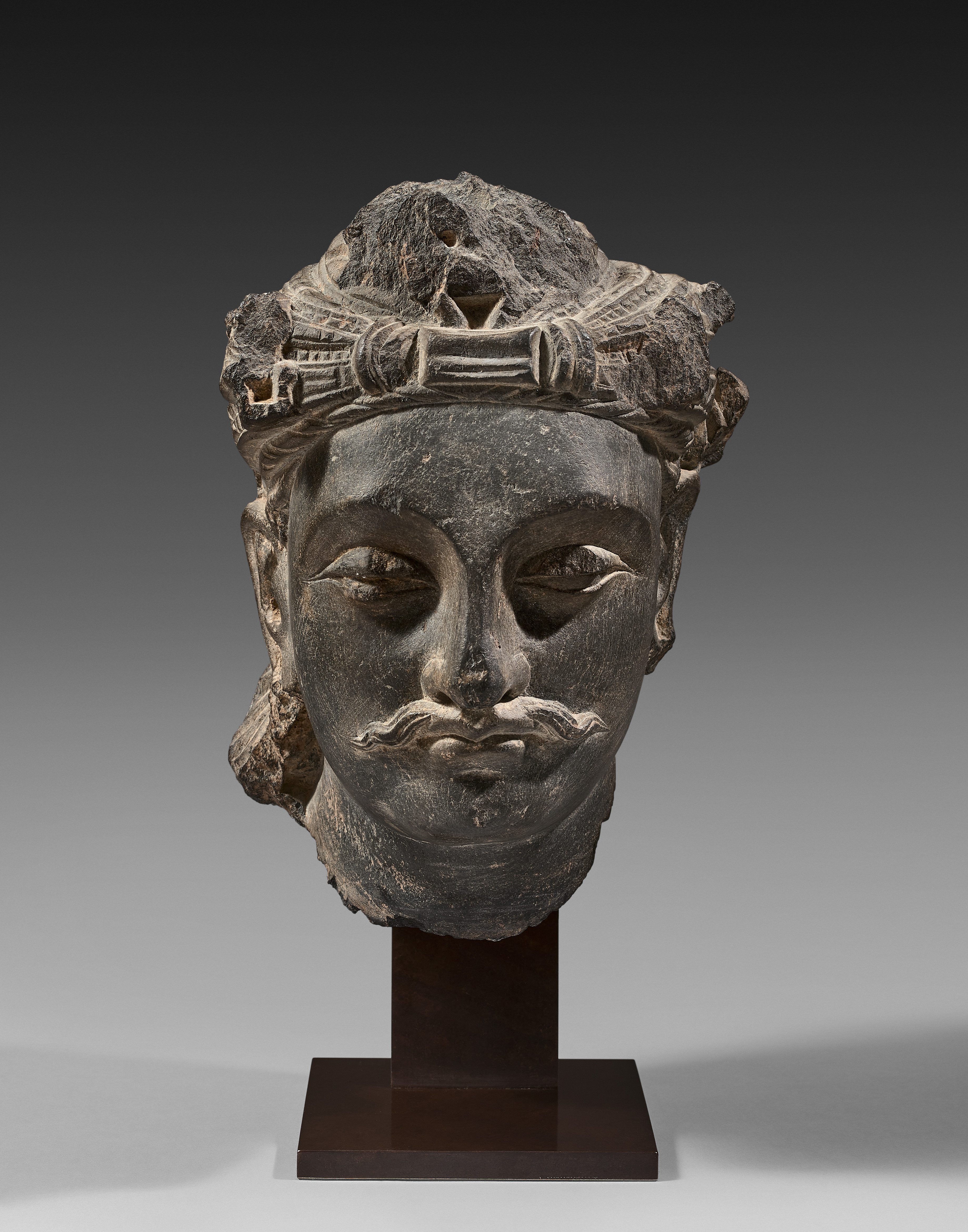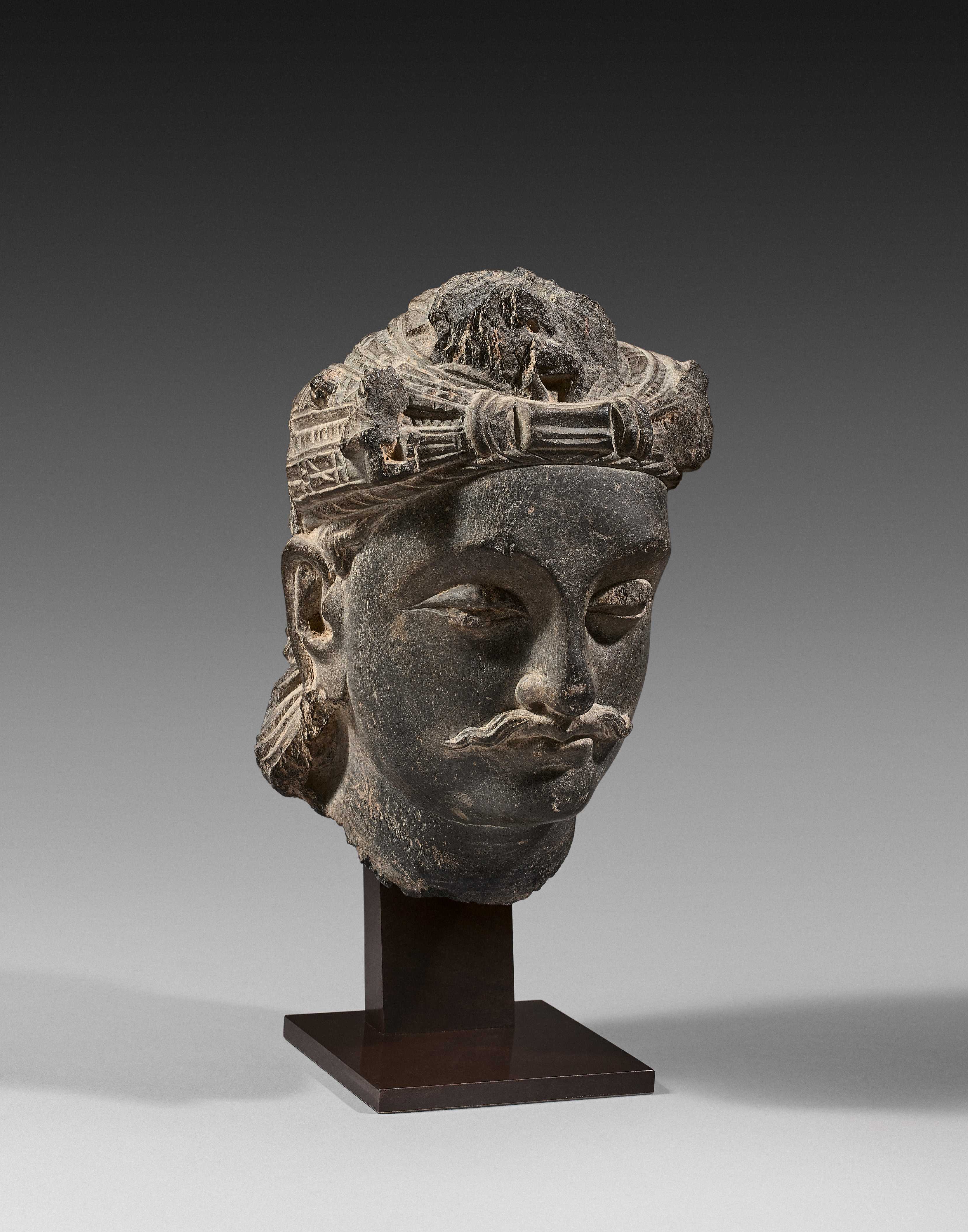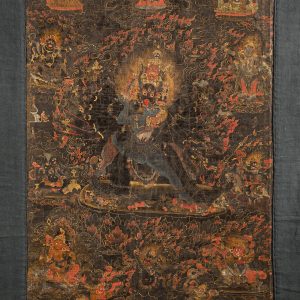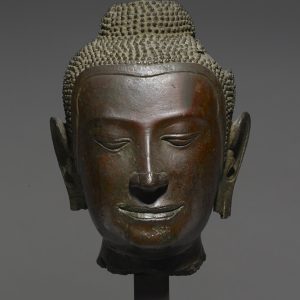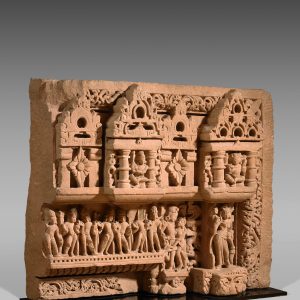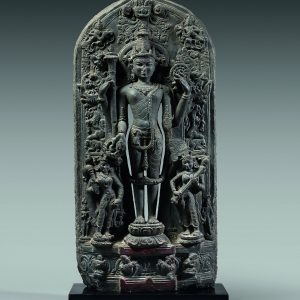Head of Bodhisattva
Schist
Ancient region of Gandhāra (Northern Pakistan)
3rd – 4th century
H. 22 cm or 8 ⅝ in
Description
The beautifully carved head has an auspicious forehead mark (‘urna’) and the wavy moustache much favoured in the Gandharan school of Kushan Buddhist art. The Museum records indicate that this sculpture was ‘found near Peshawar’, in the Gandharan region. The head in not worked fully in the round. This suggests that it was intended to be displayed against a temple structure or in a wall niche.
In Gandharan art, images of the Buddha are often flanked by two attendant bodhisattvas, Maitreya and Avalokitesvara. Bodhisattvas also began to be worshipped as independent deities in this period. They were clearly distinguished from the Buddha by their princely attire.
The head is regularly oval with smooth curves, sharp edges for eyebrows, a broad nose, a small parted moustache over the upper lip and curving downwards, small shaped lips and a rounded chin. The eyes, which are long, prominent and rounded with sharp lids, slope upwards towards the ears, especially on the right. The ūrṇā is small. Below the turban are vertical, almost cylindrical rows of curls which, on the left, also cover the top of the surviving ear.
Provenance: Private collection, France.

